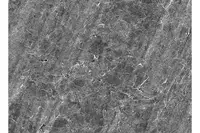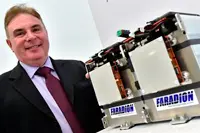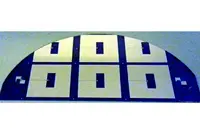Electronics News
Archive : 18 May 2015 год
 Minister for Trade and Investment Francis Maude has announced the First Time Exporters initiative, a new package of support which includes training and advice for those companies looking to sell overseas for the first time
Minister for Trade and Investment Francis Maude has announced the First Time Exporters initiative, a new package of support which includes training and advice for those companies looking to sell overseas for the first time
Minister for Trade and Investment Francis Maude has announced the First Time Exporters initiative, a new package of support which includes training and advice for those companies looking to sell overseas for the first time
The programme, which is run by UK Trade and Investment (UKTI), includes the opportunity to take part in trade missions to nearby markets to help companies develop their first contacts with foreign buyers. It also helps companies to take advantage of digital opportunities, with dedicated digital trade advisers and an online tool designed to assist with export planning.
According to Maude: "We hope the launch of First Time Exporters will encourage more companies to take their first steps on the export journey and take advantage of the demand for British goods and services that exists overseas.
"Last year, 48,000 companies drew on UKTI support; these businesses went on to create or safeguard 220,440 additional jobs. I would urge businesses of all sizes to use this opportunity to find out more about the services that are available to them through UKTI, regardless of their level of exporting experience."
Author
Graham Pitcher
Source: www.newelectronics.co.uk
 Researchers from the University of Manchester, together with graphene manufacturer BGT Materials, have used compressed graphene ink to print an RF antenna measuring 14cm x 3.5mm onto a piece of paper. According to the team, the antenna performed well enough to make it practical for use in RFID tags and wireless sensors.
Researchers from the University of Manchester, together with graphene manufacturer BGT Materials, have used compressed graphene ink to print an RF antenna measuring 14cm x 3.5mm onto a piece of paper. According to the team, the antenna performed well enough to make it practical for use in RFID tags and wireless sensors.
Graphene ink is usually made by mixing graphene flakes with a solvent, and sometimes a binder such as ethyl cellulose. Graphene ink with binders usually conducts electricity better than binder-free ink, but only after the binder material – an insulator – is broken down by annealing. However, the annealing process limits the surfaces onto which graphene ink can be printed because the high temperatures destroy materials like paper or plastic.
The research team has found a way to increase the conductivity of graphene ink without resorting to a binder. They accomplished this by first printing and drying the ink, then compressing it with a roller. Compressing the ink is said to increase graphene's conductivity by more than 50 times.
Comparing the graphene based RFID tag to those made from aluminium or copper, Xianjun Huang, a PhD candidate in Manchester's School of Electrical and Electronic Engineering, said: "Graphene based RFID tags can reduce cost significantly, thanks to a much simpler process and lower material cost."
Pic: SEM image of compressed graphene
Author
Graham Pitcher
Source: www.newelectronics.co.uk
 British battery developer Faradion says it has made the first demonstration of a vehicle powered by a sodium-ion battery. In the trial, which took place at Williams Advanced Engineering, an e-bike was propelled by 418Whr battery.
British battery developer Faradion says it has made the first demonstration of a vehicle powered by a sodium-ion battery. In the trial, which took place at Williams Advanced Engineering, an e-bike was propelled by 418Whr battery.
The e-bike battery pack, which has been designed and manufactured by Williams Advanced Engineering, is made up of four modules, each containing 12 cells. The battery is controlled by a battery management system. The development has also involved the University of Oxford, which has worked to maximise battery lifetime.
Faradion says the cells in the proof of concept battery are larger than necessary, but it believes that when the design has been optimised, the cells will be comparable in size to lithium-ion equivalents.
Sodium-ion batteries are believed to be less expensive than their lithium-ion counterparts, offering savings of around 30% in terms of cost per kWhr.
Pictured with a Faradion battery pack is company CEO Lawrence Berns.
Author
Graham Pitcher
Source: www.newelectronics.co.uk
 A pan European collaboration, involving researchers from Romania, Greece, Italy, and Ireland, has demonstrated a graphene antenna that operates in the spectrum and which can be tuned using an external voltage.
A pan European collaboration, involving researchers from Romania, Greece, Italy, and Ireland, has demonstrated a graphene antenna that operates in the spectrum and which can be tuned using an external voltage.
The antenna, developed using graphene from Graphenea, is less than 1mm thick and has a planar diameter of 100mm, which the team says makes it one of the smallest microwave antennas in the world.
Using a simple fabrication procedure and a standard CVD graphene layer on an SoI substrate, the team says it has shown antenna efficiency and its operating frequency in the X band can be modulated by applying a voltage.
In the microwave part of the spectrum, researchers have been looking for an antenna material which can be tuned with an external voltage. While advances have been made using exotic ferroelectrics, ferromagnetics and liquid crystals, these materials exhibited strong losses, preventing the creation of efficient microwave antennae.
With graphene, electrons can oscillate quickly with little loss, due to the peculiar relativistic behaviour of charge carriers in graphene. This enables the creation of transistors that operate at frequencies up to several terahertz.
The research also shows the antenna can radiate in two directions, which could be useful or detrimental, depending on the application. Directionality can be controlled with a thin reflector layer on the rear of the antenna.
The main application for this antenna will be in RF communications, where the antenna tunability will allow switching of communication channels. However, the antenna could also serve as an RF sensor.
Author
Graham Pitcher
Source: www.newelectronics.co.uk

